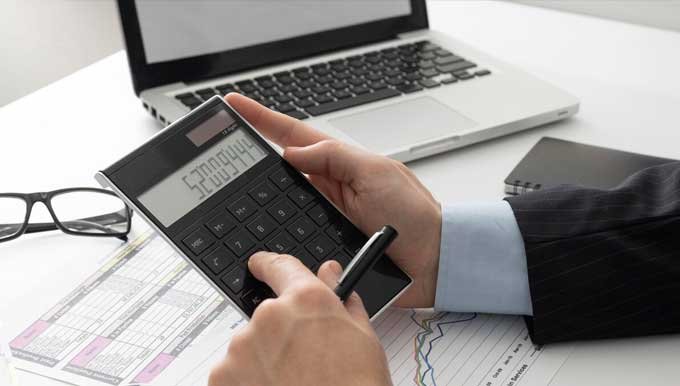Table of Contents
Keeping track of your business’s cash position is a vital part of managing finances, especially for urgent needs. The Cash Ratio Calculator from Dexovise is a free tool that lets you measure your liquidity using only cash and cash equivalents against your current liabilities.
Put your numbers into this calculator, and it shows you how your business stands right away.
More Business Calculators
What the Cash Ratio Represents
The cash ratio is a measure that tells how well a business can pay its current liabilities with just its cash and cash equivalents. It focuses on the most liquid assets a company has—those that are already cash or can become cash almost at once.
This ratio comes from dividing the total of cash and cash equivalents by the total current liabilities, showing a strict view of liquidity.
Cash and cash equivalents are the amounts a business keeps in hand or in accounts, ready to use. These include cash itself, bank balances, and short-term investments like treasury bills and marketable securities (with less than 3 months maturity) that can be sold quickly. Inventory, accounts receivable, and prepaid expenses don’t count here because they take time to turn into cash.
Current liabilities are what the business owes within a year, such as accounts payable to suppliers, accrued expenses like wages, taxes payable, short-term loans, and any current portion of long-term debt.
The cash ratio matters because it shows if a business has enough cash on hand to cover its debts without needing to sell or collect anything else.
How to Compute the Cash Ratio
Finding the cash ratio is a simple task when you have your financial numbers ready. The way to do it is by dividing your cash and cash equivalents by your current liabilities. It’s written as:

Cash Ratio = (Cash + Cash Equivalents) ÷ Total Current Liabilities
To work this out by hand, follow these steps:
- Gather your cash and cash equivalents, like money in the bank and short-term investments you can cash in fast.
- Add these up to get the total cash and equivalents.
- List your current liabilities, including accounts payable, accrued expenses, and short-term debts.
- Add those together for the total current liabilities.
- Take the total cash and equivalents and divide it by the total current liabilities.
For instance, if a business has $25,000 in cash and equivalents and $20,000 in current liabilities, the cash ratio is 25,000 divided by 20,000, which is 1.25.
The Cash Ratio Calculator makes this even easier. You enter your cash figures and liabilities, and it gives you the ratio right away, rounded to two decimal places, with no extra work.
How to analyse and interpret your Cash Ratio
Once you get the cash ratio from the calculator, it’s necessary to know what this number means for your business. The cash ratio shows how many times your cash and cash equivalents can pay your current liabilities. It’s a way to see if you have enough cash ready to cover what you owe right now.
A cash ratio of 1 or more means your cash and equivalents are enough to settle your current liabilities. For example, if the ratio is 1.25, your business has one and a quarter times the cash needed to pay its debts, which looks solid.
But if it’s below 1, like 0.60, your cash isn’t enough to cover what’s due, and you’d need more money soon to stay safe. What’s good depends on your business type, a company that needs cash fast might want 1.20 or higher, while one with steady cash might be okay at 1.00.
This understanding shows if your business can handle its bills with just the cash it has on hand.
How Cash Ratio important for Your Business
The cash ratio is a strong measure because it tells how your business can pay its current liabilities with cash and cash equivalents alone. It’s a clear sign of your cash liquidity position. These points explain why it’s important:
- It looks at cash on hand: The cash ratio checks if your cash and equivalents can pay liabilities such as accounts payable or taxes, showing what you can use right away.
- It matters to lenders: Banks and lenders look at cash ratio to see if you have enough cash to pay debts without trouble. A ratio above 1, say 1.30, tells them your business is safe to lend to.
- It keeps your finances in check: Watching this ratio shows if your cash is low or liabilities are too high, so you can fix things before they get hard.
This ratio is key because it focuses on cash you can use now, helping you and others trust your business’s strength.
Cash Ratio Illustrated with an Example
Going through an example helps show how the cash ratio works for a business.
Let’s look at a small trading company and its numbers. This will make clear how the ratio is found and what it says.
Here’s what the company has:
| Category | Amount ($) |
| Cash and Equivalents | |
| Cash | 10,000 |
| Bank Balance | 15,000 |
| Treasury Bills | 5,000 |
| Total Cash and Equivalents | 30,000 |
| Current Liabilities | |
| Accounts Payable | 18,000 |
| Accrued Expenses | 7,000 |
| Total Current Liabilities | 25,000 |
Cash Ratio = 30,000 / 25,000 = 1.2 times
This tells that the company has $1.20 in cash and equivalents for every $1.00 it owes in the form of current liabilities. If all its short-term debts came due, the business could pay them with its cash and still have a little left.
For a trading company, a cash ratio of 1.20 is a decent spot as it shows they’ve got cash ready without needing to sell goods or collect from customers.
What are the advantages of the Cash Ratio Calculator
The cash ratio calculator from Dexovise is a tool that helps you see how your business stands with its cash position. It measures how your cash and cash equivalents can pay your current liabilities.
This calculator gives you a number that’s easy to understand. These are the ways it works for your business:
- You put in your cash and equivalents, then your liabilities, and it finds the cash ratio without any hard work.
- It shows if your cash is enough to cover what you owe, telling you right away how strong your cash position is.
- When you have this ratio, you can plan what to do—like paying bills or saving more—based on the cash you’ve got.
- The calculator saves time by doing the math fast, so you don’t need to figure it out on paper.
- It helps you watch your cash over time, letting you see if things are getting better or need fixing.
This tool is handy because it tells you about your cash strength quickly, making it simpler to keep your business steady.
How can you strengthen your Cash Ratio
Working to make your cash ratio better can help your business hold a stronger cash position. When you improve it, your business looks safer for paying what it owes.
Here are some steps to make it stronger:
- Bring in more cash by selling things faster, so you have more money ready to use right away.
- Pay off some accounts payable when you can, cutting down the debts you owe now.
- Talk to suppliers for longer payment times, which keeps more cash in your hands for a while.
- Put extra money into safe investments like treasury bills that you can cash in quick if needed.
- Keep less cash tied up in things you don’t need, freeing it up to boost your ratio.
These steps are important because lenders look at your cash ratio to see if you’re good for loans, and a higher number shows you’ve got cash to spare.
Difference between Cash Ratio, Current Ratio and Quick Ratio
Knowing how the cash ratio differs from measures like the quick ratio and current ratio is useful for your business. Each ratio tells about paying your current liabilities, but they consider different combination of current assets.
The key differences between these liquidity ratios are:
| Metric | Formula | Includes | Focus |
| Cash Ratio | (Cash + Cash Equivalents) ÷ Current Liabilities | Just cash and equivalents | Cash you can use right now |
| Quick Ratio | (Cash + Securities + Receivables) ÷ Current Liabilities | Cash, securities, receivables | Cash-ready assets without inventory |
| Current Ratio | Current Assets ÷ Current Liabilities | All assets, including inventory | Full ability to pay short-term debts |
The cash ratio sticks to cash alone, telling what’s there if you need it fast. The quick ratio adds receivables and securities, while the current ratio looks at everything, even inventory that takes time to sell.
This lets you check your business’s cash from all sides.
More to explore
Getting a handle on your cash ratio is a smart way to watch your money. See more tools and services at Dexovise to keep your business growing strong.




